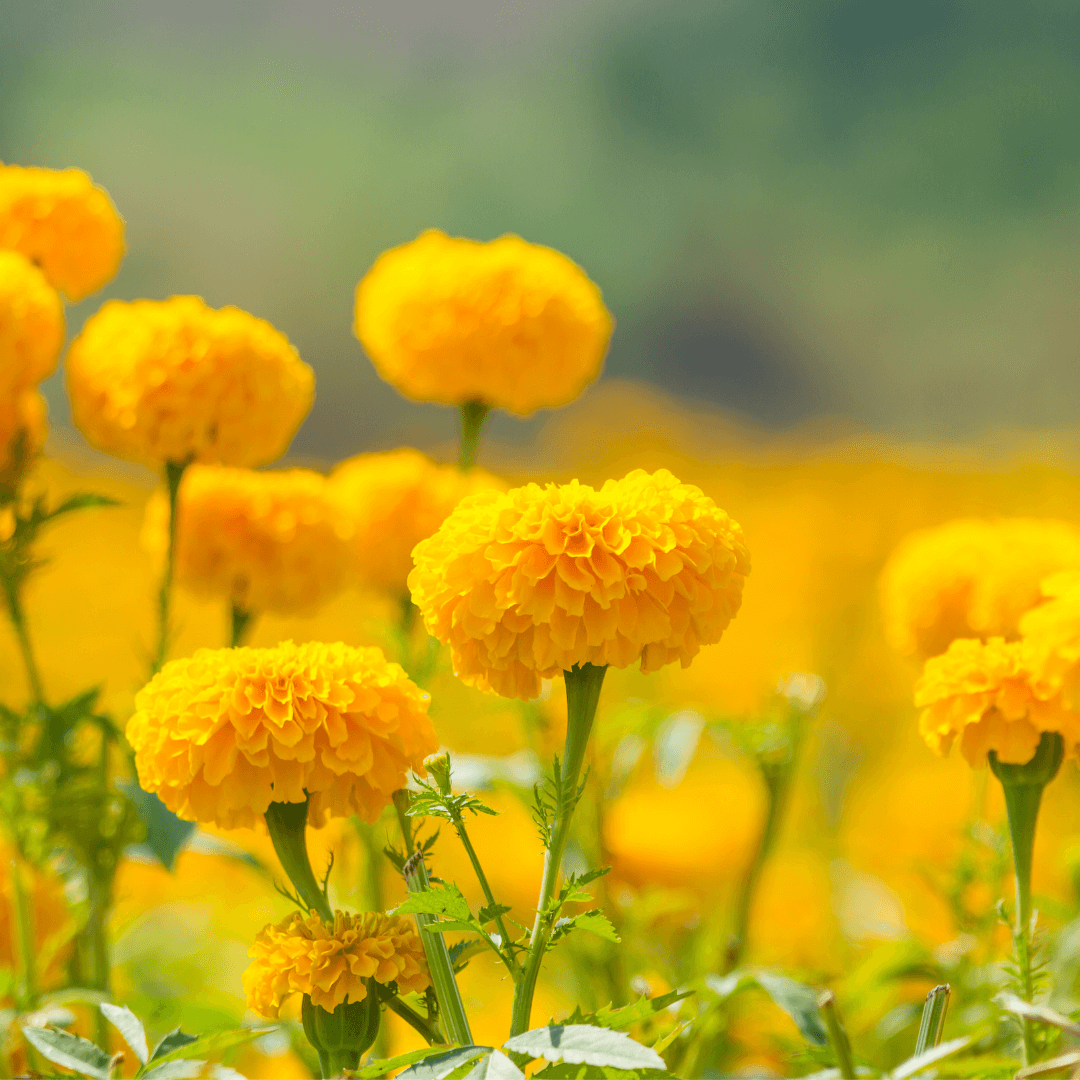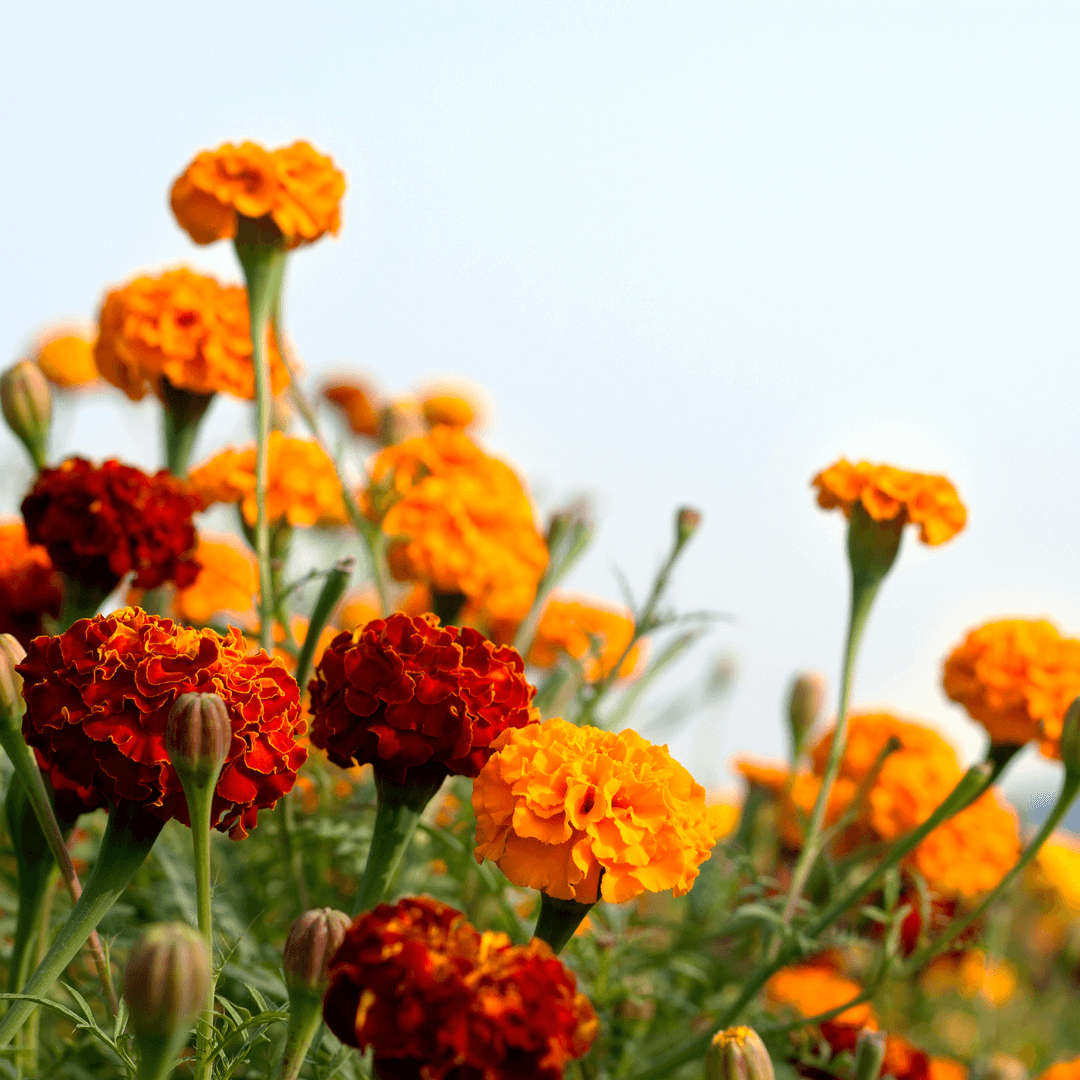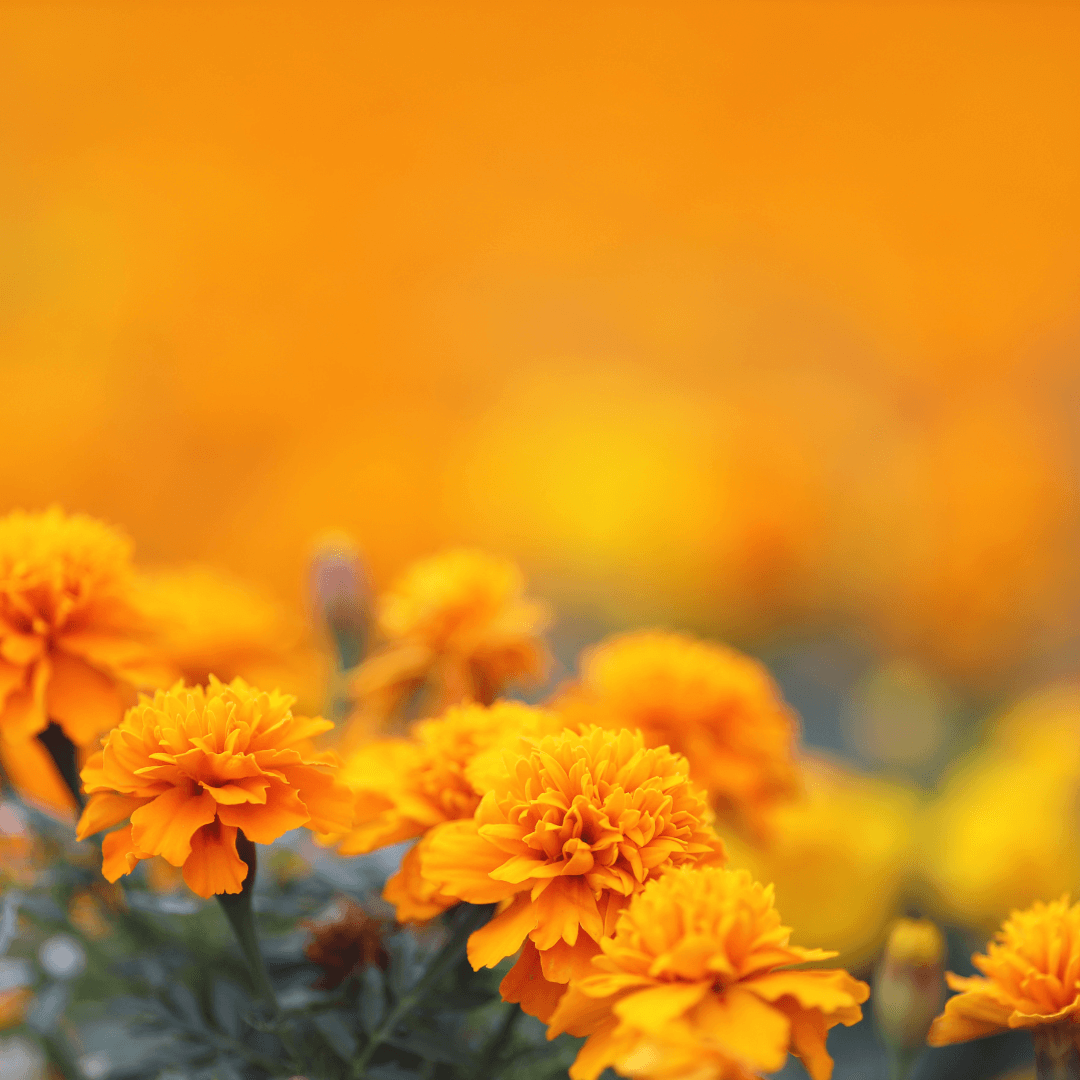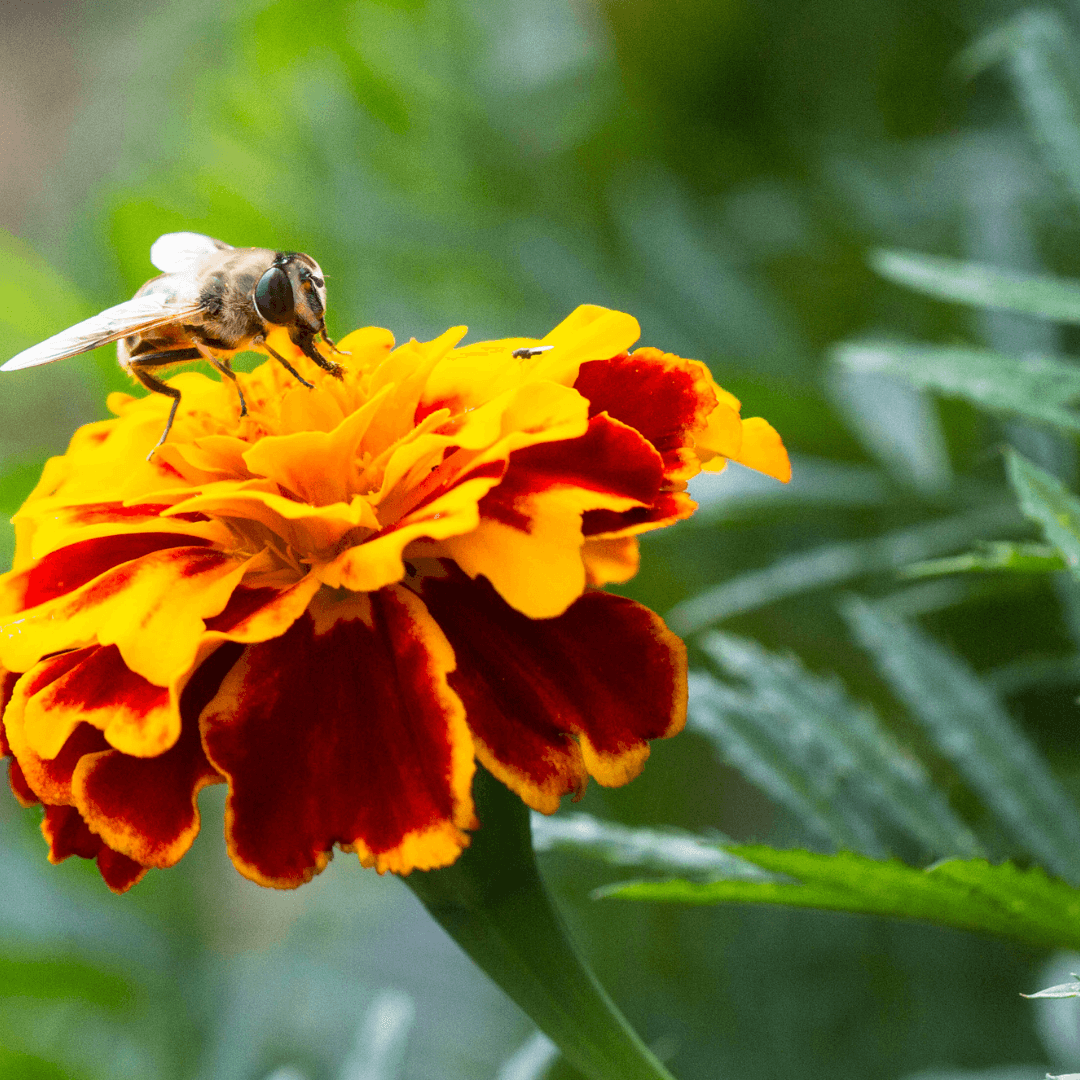Are you looking to add some pizzazz to your garden this season? Look no further than the humble marigold! As an avid gardener, I can attest to the joy and vibrancy these colorful flowers bring to any landscape. Not only are they easy to grow from seed, but they also attract beneficial insects like bees and butterflies. Plus, who doesn't love a low-maintenance flower with a bit of spunk? So grab your gardening gloves and get ready to sow some marigold seeds – your garden will thank you! Let's learn how to grow a marigold from the source.
Step 1: Choose the Right Marigold Seeds
Many marigold seeds are available, each with unique features and requirements. Some popular varieties include:
- African marigolds (Tagetes erecta): These tall, showy plants can reach up to 3 feet tall and are perfect for creating borders or focal points in the garden. They come in various colors, from yellow to orange to red.
- French or dwarf marigolds (Tagetes patula): These smaller plants grow about 6-12 inches tall and are great for planting in containers or as bedding plants. They come in a variety of colors and patterns.
- Pot marigolds (Calendula officinalis): Also known as calendula, these plants are often grown for their medicinal properties and ornamental value. They have bright orange or yellow flowers and are often used in herbal remedies.
- Signet marigolds (Tagetes tenuifolia): These small, delicate plants are perfect for edging or as a border plant. They have small, edible flowers often used in salads and other dishes.
- Mexican marigolds (Tagetes lucida): These plants have a distinctive anise scent and are often used in Mexican cooking. They have small, daisy-like flowers in shades of yellow and orange.
Marigold Seeds For Planting | 4 Variety Pack
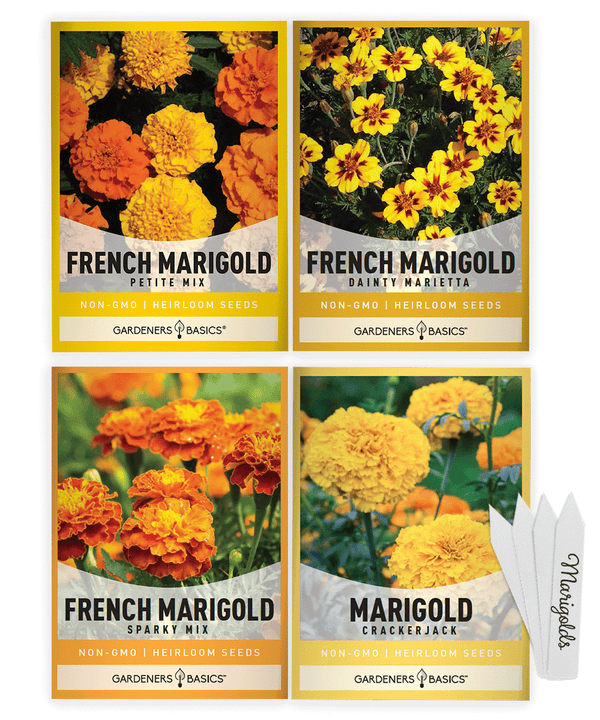
$7.95
4 Heirloom Marigold Varieties for Natural Pest Control and Beautiful Blooms Introducing our 4 Marigold Seeds Variety Pack – the perfect choice for gardeners who love vibrant, resilient blooms! This carefully selected pack includes heirloom seeds that are non-hybrid, open-pollinated,… read more
When choosing your marigold seeds, consider the size of your garden, the amount of sunlight it receives, the type of soil you have, and the colors and textures you prefer.
Step 2: Germinate Your Marigold Seeds
Before you can start growing your marigolds, you must germinate your seeds. Here's how to do it:
- F ll a seed tray or small containers with moist seed-starting mix.
- Place one or two marigold seeds on top of the soil in each container.
- Cover the seeds with a thin layer of soil, about 1/4 inch deep.
- Water the soil gently to keep it moist but not waterlogged.
- Cover the container with a plastic lid or wrap to create a greenhouse effect, and place it in a warm, sunny location.
Within a few days to a week, your marigold seeds should start to germinate.
Step 3: Prepare Your Garden
Once your marigold seeds have germinated and grown into tiny seedlings, it's time to prepare your garden for planting. Here's what you need t do:
- Choose a sunny location in your garden or landscape for your marigold plants. Marigolds require full sun to thrive, so choose a spot with at least six hours of direct sunlight daily.
- Make sure the soil is well-draining. Marigolds prefer slightly acidic soil with a pH of 6.0 to 7.0. Add organic matter such as compost, peat moss, or vermiculite to improve drainage and texture if your soil is heavy or compacted.
- Determine your frost date. Marigolds are warm-weather plants and should be planted after the danger of frost has passed in your area. In most regions, this is around mid to late spring.
French Marigold Petite Mix Seeds
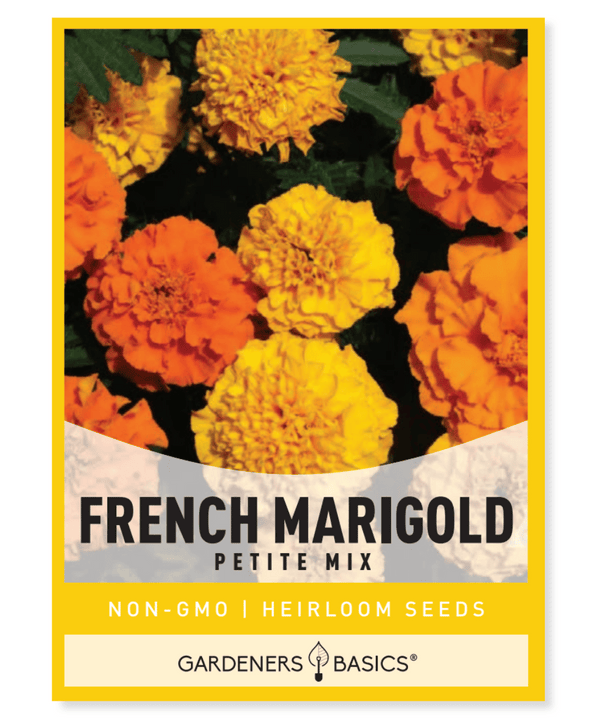
$2.49
Petite Mix French Marigold Seeds – Heirloom, Non-GMO, Non-Hybrid, Open-Pollinated Bring vibrant color and pollinator-friendly blooms to your garden with our Petite Mix French Marigold Seeds! This stunning variety of French marigolds produces compact, cheerful blooms in shades of yellow,… read more
Step 4: Sow Your Marigold Seeds
Now it's time to sow your marigold seeds in your prepared garden. Here's how to do it:
- Use a garden trowel or hoe to create shallow holes in the soil, about 1/4 inch deep.
- Place one or two marigold seeds in each hole. If you're planting different types of marigolds, keep them separate.
- Cover the seeds with a thin layer of soil, about 1/4 inch deep.
- Water the soil gently to keep it moist but not waterlogged.
Step 5: Care for Your Marigold Plants
Once your marigold plants have started to grow, taking good care of them is essential to ensure they thrive. Here are some tips:
- Water your marigold plants regularly, about once a week, or more often if the soil feels dry. Marigolds prefer soil slightly dry soil, so avoid overwatering, which can lead to root rot.
- Fertilize your marigold plants once a month with a balanced fertilizer, such as a 10-10-10 or 5-10-5. Apply the fertilizer according to the package instructions, taking care, not to over-fertilize, which can lead to stunted growth or burned leaves.
- Pinch off dead flower heads regularly to encourage more blooms. This will also keep your plants looking tidy and prevent them from going to seed too quickly.
- Consider planting companion plants alongside your marigolds. Some good options include basil, which can help repel pests, or other flowering plants such as zinnias, cosmos, or dahlias.
- Watch out for common pests and diseases that can affect marigolds. These include aphids, spider mites, and powdery mildew. If you notice any sign of pests or disease, take action promptly to prevent the problem from spreading.
Wildflower, Perennial, & Annual Flower Seed Kit | 35 Variety Pack
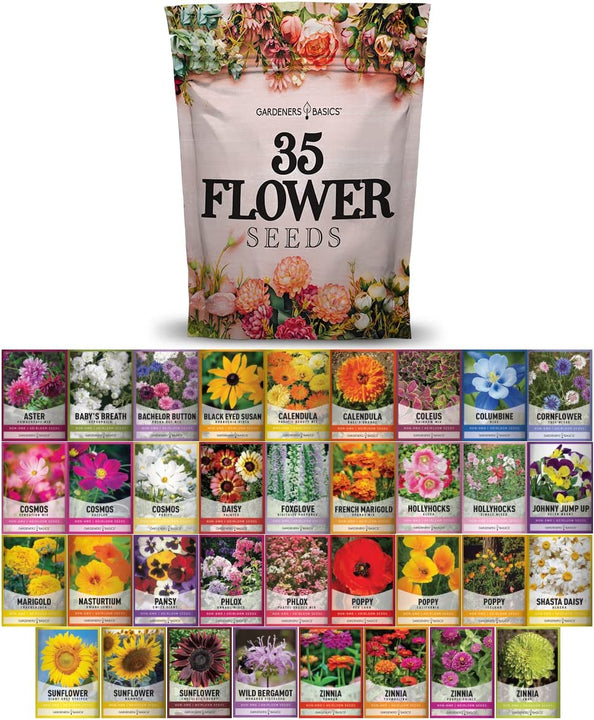
$29.95
$49.95
35 Flower Seeds Variety Pack – Heirloom, Non-Hybrid, Non-GMO, Open-Pollinated – Perfect for Pollinator-Friendly Gardens Transform your garden with our 35 Flower Seeds Variety Pack, offering a stunning and diverse selection of heirloom, non-hybrid, and non-GMO seeds. Each variety in… read more
Step 6: Harvest Your Marigold Seeds
At the end of the growing season, you can harvest your marigold seeds to save for next year. Here's how:
- Allow the lower heads to dry on the plant. This can take several weeks, depending on the weather and the type of marigold.
- Once the flower heads have dried, remove them from the plant.
- Break apart the flower heads to release the seeds. You can do this by hand or by using a screen or sieve.
- Store the seeds in a cool, dry place until the next growing season.
Conclusion
Growing marigolds from seed is a fun and rewarding project that anyone can do. Following these simple steps, you can enjoy a beautiful and vibrant marigold garden that attracts beneficial insects and adds color to your landscape. Remember to choose the right marigold seeds, germinate your seeds properly, prepare your garden with well-draining soil and full sun, sow your sources carefully, and care for your plants with regular watering, fertilizing, and pest control. With these tips, you'll be on your way to a successful marigold garden in no time!
FAQ - How to Grow a Marigold From Seed
Q: Can I grow marigolds in containers?
A: Yes! Marigolds can be grown in containers or pots, which makes them an excellent option for balconies, patios, or small gardens. Just ensure your container has adequate drainage and choose well-draining potting soil.
Q: How often should I water my marigold plants?
A: Marigolds prefer slightly dry soil, so you should water them about once a week or when the ground feels dry. Avoid overwatering, as this can lead to root rot.
Q: How do I prevent pests from damaging my marigold plants?
A: Planting companion plants like basil can help repel pests like aphids, spider mites, and whiteflies. You can also spray your plants with insecticidal soap or neem oil if you notice an infestation.
Q: When is the best time to plant marigold seeds?
A: Marigold seeds should be planted after the danger of frost has passed in your area. In most regions, this is around mid to late spring.
Q: How long do marigold plants bloom?
A: Marigold plants can bloom for several months, from late spring to early fall. Regular deadheading (r moving spent flower heads) can encourage more blooms.
African Marigold Crackerjack Seeds
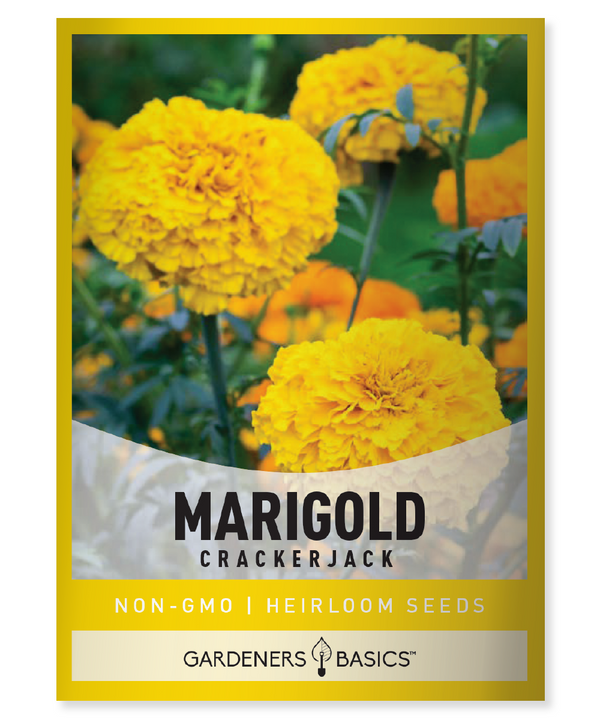
$2.49
African Marigold Crackerjack Seeds for Planting – Vibrant, Long-Lasting Blooms for Your Garden Looking to add stunning color and natural pest control to your garden? Our African Marigold Crackerjack seeds are the perfect choice! These heirloom, non-GMO, non-hybrid, and open-pollinated… read more
Q: Can I save marigold seeds from year to year?
A: Yes! You can save marigold seeds by allowing the flower heads to dry on the plant, then breaking them apart to release the seeds. Store the seeds in a cool, dry place until the next growing season.
Q: How do I deal with powdery mildew on my marigold plants?
A: Powdery mildew can be prevented by avoiding overhead watering and ensuring adequate air circulation. Remove affected leaves and spray the plant with a fungicide if you notice powdery mildew.
Q: What is the difference between African and French marigolds?
A: African marigolds are taller and have more showy flowers than French marigolds. French marigolds are smaller and more compact, with smaller flowers. Both types come in a wide range of colors.
Q: Can I eat marigold flowers?
A: Some varieties of marigolds, such as pot marigolds (Calendula officinalis), are edible and often used in cooking and herbal remedies. However, not all marigolds are edible, so research before consuming them.
Q: How do I know when to harvest marigold seeds?
A: Wait until the flower heads have dried on the plant before harvesting the seeds. The flower heads will turn brown and papery when they are ready. You can then break apart the flower heads to release the seeds.
Q: Do marigolds attract beneficial insects?
A: Yes! Marigolds attract beneficial insects like bees, butterflies, and ladybugs. They can also repel harmful pests like nematodes and whiteflies.
Q: Can I plant different types of marigolds together?
A: Yes, but it's important to separate different types of marigolds when planting them so they don't cross-pollinate and produce hybrids. For example, if you want to plant African and French marigolds together, keep them in separate beds or planters.
Q: How do I propagate marigold plants?
A: Marigold plants can be propagated by taking stem cuttings or dividing mature plants. However, bearing m marigold plants is more complex than growing them from seed and may require more skill and patience.
Q: Can I use marigolds as a natural dye?
A: Yes! Some varieties of marigolds, such as French marigolds, can be used as a natural dye to create vibrant shades of yellow and orange. To use marigolds as a ye, boil the flowers in water and strain the plant material. Then, soak your fabric or yarn in the dye solution until it reaches the desired color.
With these frequently asked questions, you'll be equipped with the knowledge to grow, care for, and harvest marigolds like a pro.



